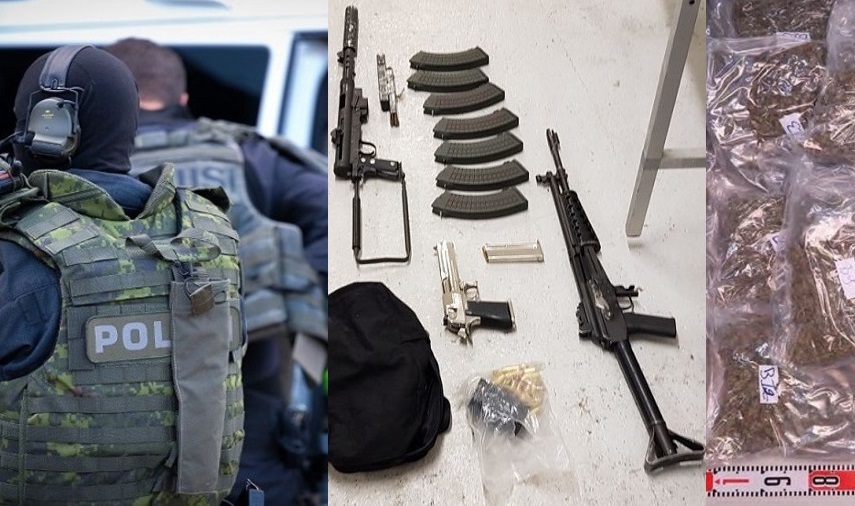Most part of organized crime remains undetected: study
Published : 11 May 2023, 04:00
At present, there are about 90 to 100 active criminal organizations identified by the police in Finland, with an estimated membership of 1,000, according to studies.
The Police University College has completed two studies on the current status of organized crime and its prevention, combating and future development and found that most of the known operators are criminal biker gangs, their local divisions and support groups, said an official press release.
However, this is only a fraction of serious and organized crime, as there are several complex networks and project-like groups active in the country, which do not use any visible identifiers.
“The gangs that use identifiers are only the tip of the iceberg of all organized crime in Finland. Most crime remains undetected, one reason being that the work to combat organized crime is not yet sufficiently multisectoral and information-based in Finland. That is why legislation should be developed to support the administrative authorities’ unprompted exchange of information and linking of register data for analytic purposes,” said researchers Pirjo Jukarainen, Marko Juutinen and Kari Laitinen, who prepared the studies at the Police University College.
The number of criminal groups has increased substantially over the past 20 years. The organized crime market in Finland consists largely of drug trafficking, human trafficking and various types of fraud.
Moreover, an increasing number of crimes in the food chain, and various environmental offences, have been detected in Finland. Public authorities and organizations are both concerned about the fact that ever younger people participate in criminal activities, support them and fall victim for them.
Organized crime is difficult to prevent because its actors and networks between them are fluid and its modes of operation change constantly. The volume of the global economy is immense and criminals use the same roads, railways, ports, ships and aircraft as legal economy. The daily volume of one logistics center can amount to hundreds of thousands of containers, and efficient supervision requires precise advance data to enable screening of the targets for inspection.
Data networks facilitate criminal activity irrespective of the location, enable masscriminality in for example web-based frauds and agreeing on logistic arrangements without physical meetings. Data networks also enable organized crime actors to transfer and conceal the proceeds of crime by using virtual currencies.
According to Europol, the European Union Agency for Law Enforcement Cooperation, most organized crime is also involved in legal business. For example, in Sweden, about every third person with identified connections to criminal groups holds a responsible position in a company. Moreover, legal entrepreneurs may offer their services, such as financial management, logistics services or server capacity to criminals. In many cases they do not even realize that they facilitate criminal activity.
“Large-scale infiltration of crime in economic life could be prevented in Finland through multisectoral administrative measures, but at present, deficiencies in the administrative authorities’ rights of access to data restrict this. The legislation currently in place leaves it unclear whether involvement in a criminal entity is information pertaining to private life or privacy, which is confidential,” the researchers said.
Organized crime operators know how to market and promote a criminal way of life, and this makes crime prevention and combating difficult. Such marketing utilizes both the entertainment industry and journalistic media as well as social media. That is why the prevention of organized crime requires cooperation between the authorities, media and cultural sector actors.
“Certain parts of popular culture and social media content give a false impression of professional and serious crime. The experts we interviewed were concerned about the fact that children and young people in particular take the true crime culture at face value. In fact, there are indications that organized crime has become more brutal than before, as the violence is targeted also at the people close to the criminals, and victims are blackmailed and humiliated,” Jukarainen, Juutinen and Laitinen said.
The researchers call for a more responsible approach to the production of media content. They say that it is extremely important to protect children and juveniles in particular from organized crime and its marketing. Therefore, more media and legality education should be targeted at young people.
The studies of the Police University College have been commissioned by the Ministry of Justice and the Ministry of the Interior, and they are part of the renewal of the strategy for combating organized crime. Survey results are based on literature reviews, a workshop, and interviews.


